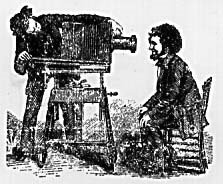Gita and Rajan’s “Introduction to Race Studies” and Sardar and Van Loon’s section on Race and Identity in Introducing Cultural Studies both provide details on what cultural studies theorists focus on when studying the concept of race. Both of these texts state that raced is a socially constructed concept, created by Western culture. In “Introduction to Race Studies”, Gita and Rajan state that the derogatory idea of the “other” which is created by racial bias is “founded on a European tradition of classical beauty which systematically relegates all other forms of beauty and pleasure in the world to the margins” (383). This idea developed with the Enlightenment and the industrialization of Europe and its subsequent colonization of other countries. Western cultures see non-Western cultures as “outside modernity” (Sardar and Van Loon 122) and therefore place different cultures below themselves. It is here that the concept of power enters race studies, in that Western cultures are once again utilizing their political power to dominate. One thing that Sardar and Van Loon’s text mentions that “Introduction to Race Studies” does not is the concept of multiculturalism and its negative aspects. They state that multiculturalism makes cultures only so “different” from Western culture and does not see them for what they truly are; this creates the notion of the “other”. They then go on to discuss the idea of diaspora and the idea of “home” for cultures that aren’t as accepted as Western cultures. This creates a sense of belongingness to a certain area and an “us” versus “them” mentality, which is an idea that parallels this concept of the “other”. The basis of studying the notion of race through a cultural studies lens is to create a challenge to Euro-American domination.
The New Keywords term that I found helpful to develop the topic of race studies is “identity”. It is mentioned on page 127 of Introducing Cultural Studies. The notion of collective identity as “particular ways of imagining and instituting social groups and group belonging” (173) is applicable to the notion of belongingness mentioned in Sardar and Van Loon’s text. Also, ascribed identity as mentioned on page 175 of New Keywords relates to the societal “other” created by race.
This interview entitled “Race- The Power of an Illusion” further explains how race is a socially constructed idea and explains specifically about race relations having to do with American Indians.
http://www.pbs.org/race/000_About/002_04-background-02-07.htm
This Wikipedia article, “Cultural Identity” is a short but informative article explaining questions of identity. It links cultural identity to identity politics, which is another interesting article on Wikipedia relating to this topic.

No comments:
Post a Comment